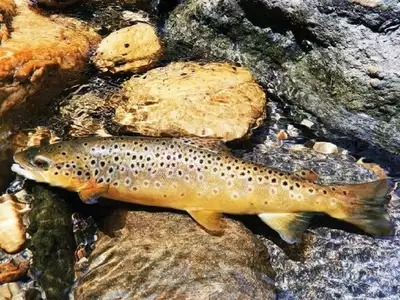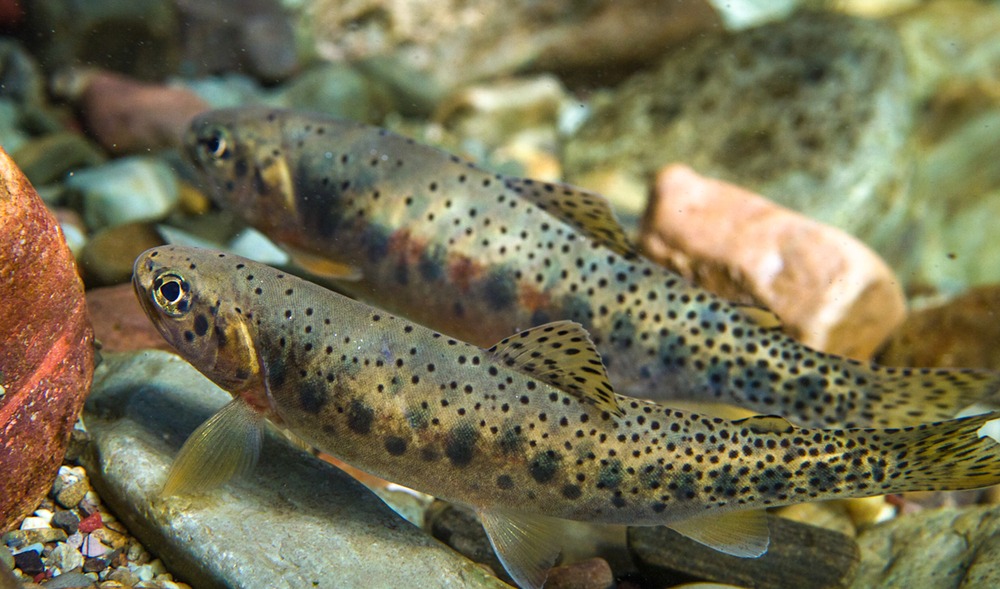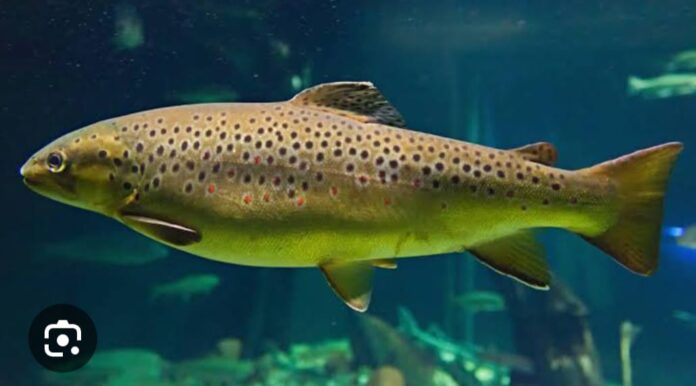Subsistence and commercial fisheries exploit the larger fish, such as the cyprinids Labeo dero, Tor putitora, Tor tor, Barilius bendelisis, Schizothorax richardsonii and Schizothoraichthys esocinus, as well as Garra gotyla and Crossocheilus diplochilus.
BI News, Nainital: The eastern Himalaya has a greater diversity of coldwater fish than the western Himalaya.  218 fish species are listed for the whole Himalayas.The Himalayas are drained by 19 major rivers, of which the Indus and the Brahmaputra are the longest, each having a mountain catchment of about 160,000 km. Of the remaining 17 rivers five belong to the Indus system, of which the Beas and the Sutlej have a total catchment area of 80,000 km,nine (Ganga, Yamuna, Ram Ganga, Kali-Sharda, Karnali, Rapti, Gandak, Bagmati, Koshi).
218 fish species are listed for the whole Himalayas.The Himalayas are drained by 19 major rivers, of which the Indus and the Brahmaputra are the longest, each having a mountain catchment of about 160,000 km. Of the remaining 17 rivers five belong to the Indus system, of which the Beas and the Sutlej have a total catchment area of 80,000 km,nine (Ganga, Yamuna, Ram Ganga, Kali-Sharda, Karnali, Rapti, Gandak, Bagmati, Koshi).
The fish species distribution in the Himalayan streams depends on the flow rate, nature of substratum, water temperature. and the availability of food. Common snow trout, found in Himalayan region and much sought after as a food fish, alone would lose around 21% of its existing space of 16,251 square kilometres.
Scientists say that “continuous stalking of natural habitat by human beings” is one major factor that is adding upon the miseries of Himalayan fishes. Other factors include pollution, global warming, the damming of rivers and introduction of exotic fish.Brown trout, an invasive fish species, which was introduced in the Himalayas in 1860 by the British, has also emerged as a major threat to native fish species.
The invasive breed is found at a high altitude in cold water rivers and is carnivorous whereas the native common snow trout is found in cool water in the mid-altitude rivers of the Himalayas and is herbivorous.
“The rising temperature would push the native fishes to move upwards in search of comfort, which is where the conflict will arise among Himalayan fishes and brown trout. And the carnivorous fish would dominate the Himalayan rivers,” N.N.Pandey, senior scientist ICAR -Directrate Of Cold Water Fisheries Research .According to the scientists, over 200 major Himalayan dams also pose a grave risk to the habitat of the native fish species.
P.K.Pandey, Director at ICAR – DCFR, said, “Our study also found that these high-altitude fishes survive nicely in their natural habitat in the areas where dams have not been built, like the Tirthan river in Himachal Pradesh. Similarly, Mahseer is thriving in the undammed Nayaar river in Uttarakhand’s Pauri Garhwal. Our research work indicates that, by 2050, the snow trout will vanish from 400 square kilometres of the Himalayas from Jammu and Kashmir to Arunachal Pradesh.”


The study indicates that most of the lower altitude streams across the Himalayas would be rendered unsuitable for the existence of snow trout with the rise in temperatures.
An ensemble of 72 statistical models across the Himalayas, the study — authored by Wildlife Institute of India (WII) scientists Aashna Sharma, Vineet Kumar Dubey, Jeyaraj Antony Johnson, Yogesh Kumar Rawal and Kuppusamy Sivakumar – reveals the vulnerable snow trout would be squeezed into the high-altitude rivers in the Himalayas.
“Our empirical findings strongly suggest that snow trout, a prime cold water fish of Himalayan rivers, would suffer a habitat loss in the future and the high-altitude areas would act as only saviours, provided suitable habitat connectivity is offered,” senior scientist Kuppusamy Sivakumar told .
The study says mountain systems across the globe are conspicuously sensitive to on-going climate alterations and the condition is much more detrimental in the Himalaya, where the rate of warming, and thus the glacier meltdown, is much higher than elsewhere.








